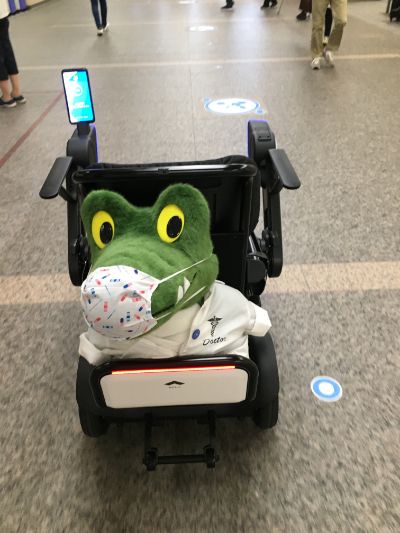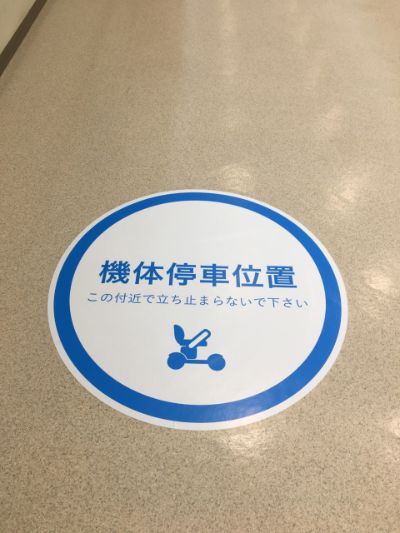AI technology getting you to your chosen destination with ease!
As part of the AI Hospital project at Osaka University, an electronic wheelchair using advanced smart technology is being test run between 1:00 and 3:00 pm each day for planned future use within Osaka University Medical Hospital. The test started on June 7th. The aim is to allow patients who find it difficult to walk long distances to ride the electronic wheelchair to a limited number of destinations on the first floor of the hospital. Later, the destinations will be increased and hopefully to other floors. As outpatients often have to cover quiet a distance when coming for appointments, the electronic wheelchair is likely to be popular with patients.
Professor Yamamoto from the AIDE project was given a demonstration of the electronic wheelchair and got to ride it from one start point to the radiology department. She could program her destination and then sit back and enjoy the ride. When the sensor picked up a person or object in the way, the wheelchair automatically stopped. Professor Yamamoto got to ride with the Wani (crocodile) mascot of Osaka University. Picture icons have been created to show the path of the wheelchair to hopefully create smooth runs with few obstacles causing the chair to stop and wait. If you are visiting Osaka University Hospital, why don’t you check out this smart wheelchair on the 1st floor.


One of our Advisory Board Members, Midori Senoo, who is the managing director for the Myotonic Dystrophy Patients’ Group of Japan, suggested that the AI electronic wheelchair would be very helpful for people living with Myotonic Dystrophy as one symptom is impairment of visual-spatial construction abilities.
The Smart sensors would be a huge help to avoid obstacles.
In addition, some patients with Myotonic Dystrophy find it hard to apply the break quickly with a regular electric wheelchair due to stiffness and tightness of the muscles in the hand as a result of their condition. Midori said it would be very helpful if the AI wheelchair took charge of breaking when there was a danger of hitting another person or other type of obstacle. It is great to receive such insights.
Link to University coverage of the wheelchair.


